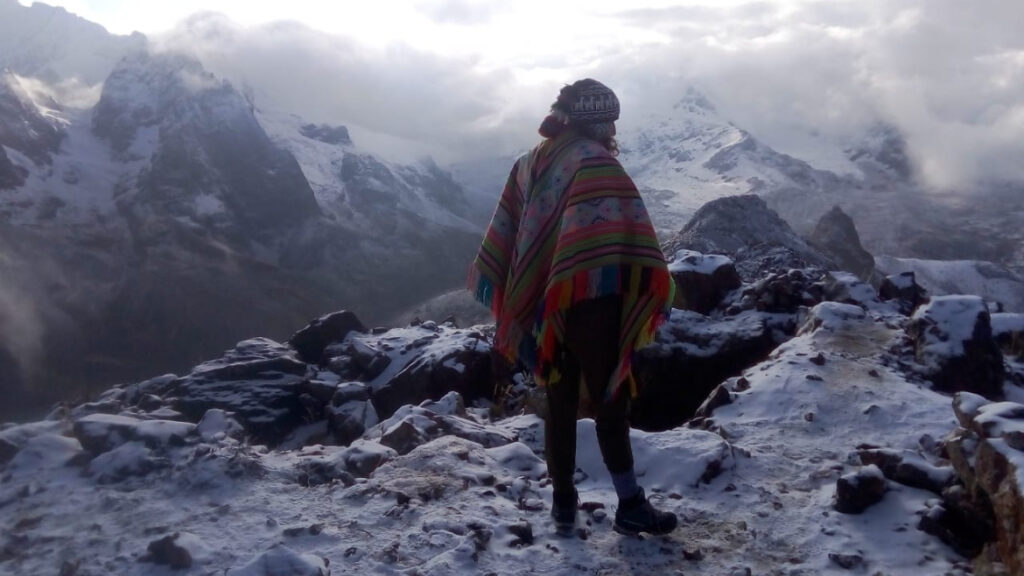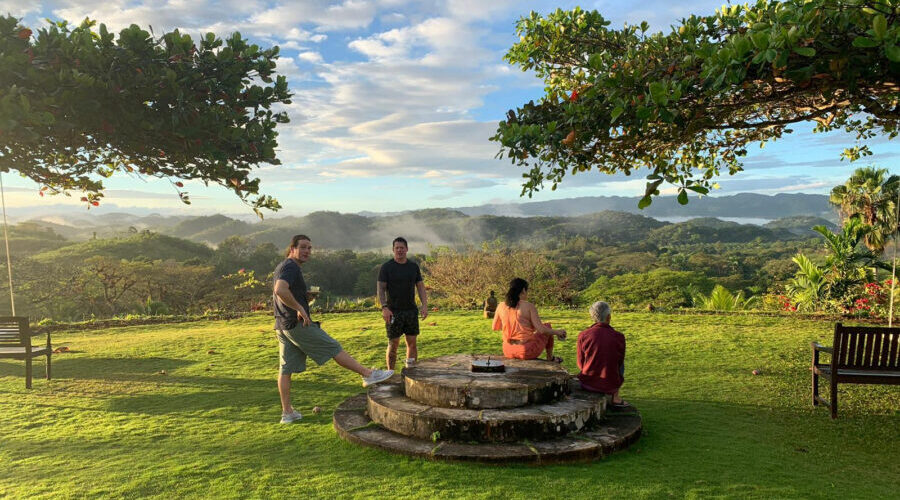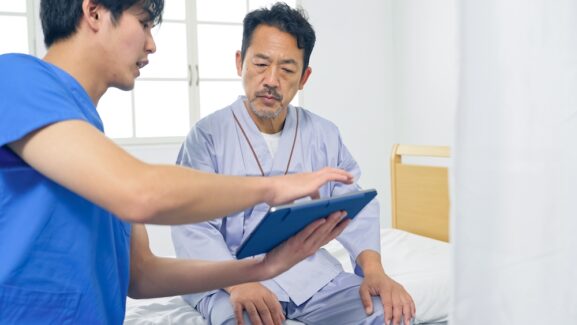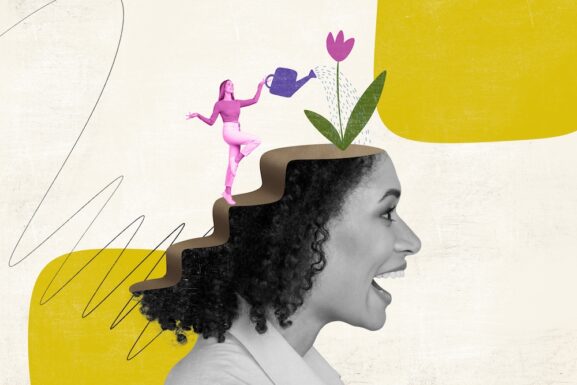How Psychedelics Helped Pro Fighters, Hockey Players (and Me!) Heal From a Traumatic Brain Injury
A few months ago, I suffered the most challenging injury I have ever faced— a brain injury. I was sparring in Jiu Jitsu when a knee came swinging for the bridge of my nose with full force, and everything went black.
Rolling around on the ground drenched in someone else’s sweat is not something that is often favored by women, and there’s always one guy who doesn’t realize how much stronger he is than me. That day I was partnered up with the most dangerous type of fighter—egotistical. So it went: knee, nose, darkness.
When my consciousness flooded back, the room was spinning, and then my whole body started to ache. The next day, something felt off. I was having trouble focusing and balancing. Light of any kind felt overwhelming.
I had a severe concussion. It felt like the neurons in my frontal lobe were trying to work, but they couldn’t. After just an hour or two of work, a short drive to the grocery store, or an intense workout, my brain felt like it was melting. Blood pooled under my eyes. I slept 15 hours a day. It all lasted for weeks as I tried and failed to keep up with my day to day life. Finally, after a long day, I stumbled and fell like I was drunk, and had to crawl up the stairs to my bedroom.
That is when I knew I needed help.
Battered Brains, Rewired: A Quest for Healing
Traumatic brain injuries are quite debilitating, even when they’re minor. And up until recently, there were little to no viable treatment options.
When I was in a place where I most needed help on how to proceed with treatment, comprehending even simple articles was difficult due to my injury, so an in-depth research project was out of the question.
Of all the broken bones, sprains, and torn ligaments I’ve ever had, this concussion felt worse. Instead of just one part of me hurting, I felt like the windshield of my life had cracked. I was terrified, and I had no idea what to do.
When I found a little clarity, I went on a quest to find a new treatment that could give me hope. A desperate search can lead to interesting places. Like pro sports, academia, and the fungal kingdom.
RELATED: Two states have legalized psilocybin therapy for the first time ever. Click here to get on the waiting list for Oregon psilocybin therapy. And click here to get on the waiting list for Colorado psilocybin therapy.
Psychedelics On the Ice and in the Cage
As an NHL player, Daniel Carcillo suffered many concussions. The damage left him with slurred speech, debilitating headaches, and he was utterly depressed. He spent half a million dollars trying to overcome the issues–to no avail. Riley Cote, another pro hockey player, was an enforcer on the ice. He brawled his way to black eyes and bent noses and, after he quit, depression. As a UFC fighter, Ian McCall, was battered, elbowed, and bruised. All three athletes found their injuries left them struggling. Even suicidal–in Ian’s case.
After nearly losing hope, all three turned to psychedelics.

The Science on Psychedelics for Brain Injuries
With brain injuries, one or a few areas of the brain stop communicating efficiently with the rest of the brain. This severing can cause symptoms such as difficulty forming coherent thoughts, headaches, poor motor control, slurred speech, light sensitivity, difficulty regulating emotions, and more.
Research specifically focused on treating brain injuries is minimal. Yet Psychedelics are known to create new neural pathways, decrease neuroinflammation and increase neuroregeneration–things that heal a traumatic brain injury.
It was a 2017 study, out of Imperial College London, on the effect of psilocybin on the brain that sparked Daniel Carcillo’s interest in psychedelic treatment. The study showed that psilocybin could increase brain activity, which was the very thing that Daniel had been trying to do during his years of unsuccessful treatment.
I spent time listening to Daniel, Ian, and Riley. All of them told me they have successfully treated their injuries, and have been able to overcome their symptoms and return to living a full and fulfilling life.
Science and Industry Takes Notice of Psychedelics for Brain Injury
Today, they have become unexpected ambassadors for a surprising treatment. In fact, hockey and MMA fighters are two of the most vocal and visible groups of people highlighting a new and under-explored avenue for psychedelics.
Athletes such as Daniel, Riley, and Ian have had such success that companies are starting to take an interest in this area as well. Algernon NeuroScience recently announced that they are initiating research into the benefits of DMT treatment for traumatic brain injuries. Ian McCall also hopes to initiate a study testing the effects of ayahuasca for TBIs in the near future.
RELATED: Daniel has recently launched My Crew Doses, a line of health and wellness gummies using the all-natural and legal Amanita muscaria mushroom
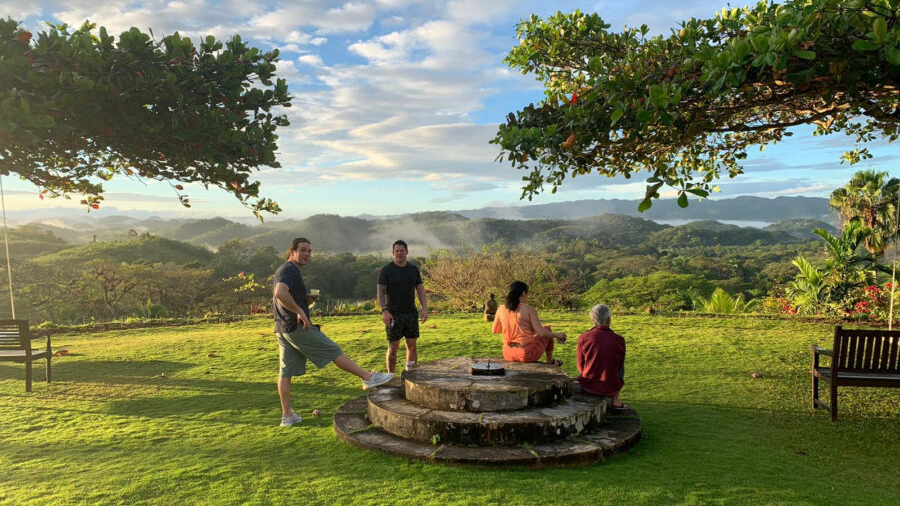
What to Consider When Seeking Psychedelic Treatment for Brain Injuries
One size does not fit all. Healing a TBI with psychedelics means figuring out what works best for you and sticking to what you feel comfortable with. It is important to be intentional about your use of psychedelics, or else you may miss out on the full scope of benefits. Things to consider:
Choosing a Compound
All psychedelics have been found to have benefits for brain health. There are at least a half a dozen psychedelic compounds commonly used for treatment, and they all have their benefits–and risks.
Ayahuasca/DMT
Ayahuasca is a popular treatment for brain injuries. Unfortunately, ayahuasca is difficult to access and is rarely offered in the US, Canada, and Europe in a legal way; many people go to Central and South America to work with ayahuasca.
Mushrooms
Psilocybin mushrooms are the most commonly used and well-studied psychedelic for treating brain injuries. Psilocybin certainly takes the cake for compound with the most data supporting its use in treating brain injuries.
Ketamine
Though studies have proven that psilocybin and DMT are relatively safe and beneficial, it remains illegal in the United States and many other countries. People looking for legal treatment in the US may want to consider ketamine therapy instead. It is safe to use and is accessible through a growing number of clinics across the US, Canada, and Europe.
RELATED: Here is a list of the ketamine clinics closest to you as well as other psychedelic therapies in your area.
Micro or Macrodosing
Next up, you’ll have to decide if you’ll be macro or microdosing. Microdosing means taking a tiny amount of a psychedelic (so little that you do not feel any psychoactive effects). A macrodose causes sensory distortions. Both can be beneficial. After Daniel Carcillo’s first hero’s dose of psilocybin (5.6 grams) his headaches, light sensitivity, and slurred speech diminished significantly. He has since utilized a mix of macro and microdoses to promote healthy cognitive function. Everyone I spoke with found incredible benefits through a mixture of macro and microdosing natural psilocybin— as have I.
Guided or Solo?
Many people embark on their psychedelic journey solo, or perhaps with some friends. Most stay perfectly safe. A guide is not necessary when microdosing; however, high doses can be more challenging. A trained facilitator may ease any fears and navigate through difficulties. Working with a professional may help you access the full scope of benefits.
Western or Shamanic
There is a huge ongoing debate in the psychedelic space about whether the Western or traditional shamanic approach to psychedelic treatment is best, and frankly, the answer entirely depends on what you feel comfortable with. There are many people who would only feel safe working with a medical professional with a college degree, while others have little trust in the medical institution.
When taking psychedelics, especially experimenting with large doses for the first time, your personal sense of safety is far more important than someone else’s opinion of what you should do. If you feel more comfortable with a certified psychologist, then that is who you should work with. However, since most psychedelics are illegal in the US, it is difficult–though not impossible–to find a medical professional willing to work with these compounds because they risk their professional credentials.
As for the more traditional side, it may also be difficult–but not impossible–to find good shamans in the US, as many of the well-trained and qualified ones stay in their home towns in Central and South America. Though you can often find psychedelic ceremonies and retreats advertised online, you should obtain a personal recommendation from someone you trust.
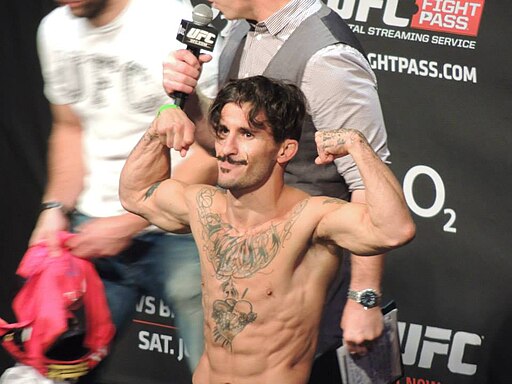
Gentle or High-Pressure
Another variance in high-dose philosophies is a gentle vs. high-pressure process. A gentle experience would be one focused on comfort and total sense of safety. This may look like calming music or a comfortable bed you lie in during the experience while a facilitator is on hand to help you with any and all needs.
On the other hand, some styles of psychedelic ceremony deliberately put you in an uncomfortable, yet still safe, space to force you to work through your issues. For example, this is quite common in Shipibo ayahuasca dietas and Q’ero San Pedro Ceremonies. You might be completely isolated from others or spend the day trekking through the mountains while tripping on mescaline. Ian McCall is a strong advocate for the high-pressure method. His philosophy is that pressure will make you stronger and more resilient.
Brain injuries can cause a lack of trust in self because of the difficulty performing basic tasks that it causes. Being in a situation that forces you to trust yourself while on psychedelics can certainly be a useful tool. However, gentle journeys may be more fitting for a person with a brain injury since stress can worsen symptoms.
RELATED: I’m Mentally and Physically Healthy. Should I Take Psychedelics?
How to Maximize the Benefits of Psychedelics
Nutrition
One thing that everyone I spoke with highlighted as an important part of their healing journey was nutrition. The food you eat every day could either be decreasing or increasing inflammation in your body. Which is going to affect the ability of your brain to heal.
Lower Stress
Maintaining a healthy body and keeping stress low will expedite the healing process. Meditating, cold exposure therapy, sensory deprivation (float tank), or breathwork could help you before, during, and after your psychedelic experience.
Preparation
Taking the proper steps to prepare for a psychedelic experience, or even to start microdosing, may influence just how beneficial the medicine is. Riley Cote says: “The more work you do, the further the medicine will take you, and the more you will get from it.”
If you go about your busy day as normal, eat poorly, and do nothing to get ready for your psychedelic experience, it will result in less benefits than if you had prepared, or, you may even have a negative experience. Before jumping into a psychedelic experience, especially with large doses, take time to reflect on what it is you want to accomplish, how you want to show up for yourself, and what intention you have going into the ceremony– you’ll get far more benefits if you do.
Integration
After the experience, or while you are microdosing, it is important to take what you learn from the medicine and integrate it into your life. Riley says that “integration is about changing all aspects of your life for better health.” If you are struggling to keep stress levels down, it may mean taking a week off work to relax and heal. Or, if the medicine shows you that you have issues with your nutrition and exercise regimen, it may be time to address that. Meditation, journaling, or therapy may be good tools to help you integrate your psychedelic experiences.
RELATED: Top Five Products to Support Your Plant Medicine Journey
Using Psychedelics to Overcome Your Brain Injury
Brain injuries can have a silver lining. A chance to rediscover yourself, redefine your relationship with your mind and body, and build healthier habits. The three athletes have all been working with psychedelics for five or more years. They no longer suffer from the debilitating symptoms of their head trauma. Yet they continue to find additional value from psychedelics.
Daniel Carcillo has been able to shift through major life transitions with grace and courage thanks to his work with psilocybin, he told me. The day after his first macrodose of psilocybin he said: “I was on the phone with my wife, and she couldn’t believe that I was no longer slurring my words. And, for the first time in a long time, I could go outside without my sunglasses and not get a splitting headache.”
Riley Cote has used what he learned from psychedelics to connect to his mind, body, and spirit in ways that he never thought possible and now finds himself happier and healthier than ever before. Ian McCall has been able to hone his craft as a fighter and help other athletes reach new levels in their competition.
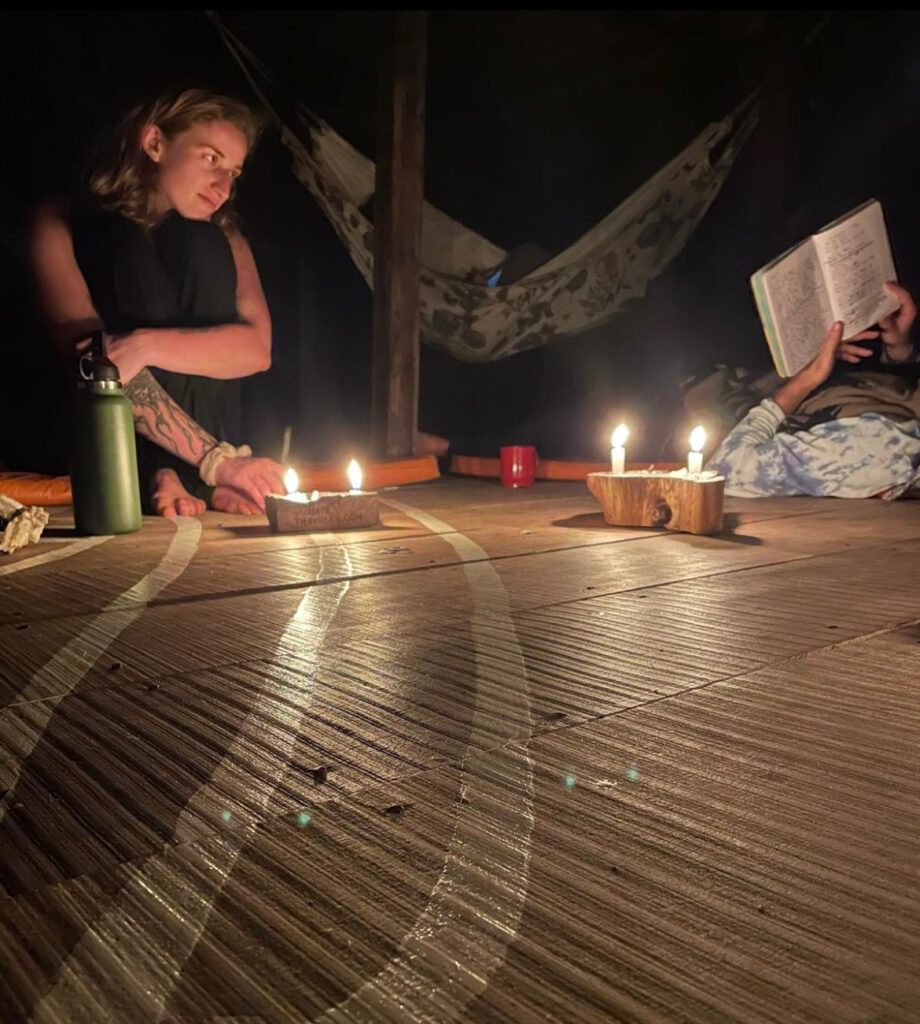
What I Did…
Let me walk you through my journey.
I decided to work alone, because I have had previous experience with psychedelics and felt comfortable doing so. I chose psilocybin because I am familiar with it and it was easily accessible. Though I decided to start with microdosing, the universe had other plans. I ate the recommended dose for a microdose of the mushroom chocolate bar that I had obtained, and it turned out to be more of a macrodose.
The surprise trip ended up being the best thing for me. It gave me one message: Slow down. Relax. So, after my trip, I finally took a week off. I slept and ate healthy meals, and stopped drinking coffee and opted for nutritional mushroom tea.
I did not do the high-pressure method, even though I have often been a strong advocate of this. When it came to working with a concussion, it was more beneficial for me to have a calm and relaxing environment. The medicine urged me to bring more serenity into my daily life to reduce my cortisol levels– which helps with the healing process.
Journaling and meditation, a trip to the spa and a float tank, and a cold plunge several times helped me relax and regenerate.
I started microdosing the psilocybin chocolate. Between the rest and the psilocybin, my symptoms subsided by about 30 percent during the first week. I kept going–five days on, two days off. After a month of microdosing, and taking care of myself, I had nearly no symptoms. I pay closer attention to the messages my body sends. And I built a new level of self-trust. After another month of clean living, I actually feel healthier than ever.
I had to face my fears. My injury made me terrified to return to the sport that brings me so much joy. Ironically, it was Ian McCall who helped me face that fear. He reminded me that fears can only control us and prevent us from living life if we let it. So, just this morning, I went to my first martial arts class since the injury.
There was no sparring. Diving head-first into training can lead to taking a knee to the head. So instead of my usual full intensity, I am listening to what the mushrooms, and my body, told me:
Take it easy.
